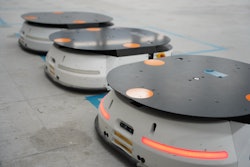
When it comes to manufacturing and effectively managing the supply chain, more technology is not always better. While digital transformation continues to make a significant difference in streamlining processes and boosting productivity, it can also inadvertently create more work. This happens when there is abundance of information located in various files that sit in databases, spreadsheets, desktops, apps, etc. You can have the most organized systems in place, but when it comes to extracting information from all those sources, the task becomes unwieldy. Going from system to system in search of information can quickly eat up an employee’s day, leaving little time for impactful, revenue generating activities. This pervasive issue is known as “Gray Work.”
In fact, a recent Quickbase survey of 1,000 workers found that employees were spending 10-15 hours a week on Gray Work. Along with a productivity slump, Gray Work leads to inconsistent information being shared throughout the company. Information that is critical to strategic planning and decision making.
This is not to say reduce your tech stack, especially investments in solutions running the supply chain. Nor is it to imply that digital transformation is not worthwhile; it consistently proves its value. However, Gray Work is a growing issue because the technology infrastructures of yesterday don’t reflect the way people work today.
To achieve business goals, teams need to work throughout the company, with expertise and information spread across multiple projects with various deadlines that are managed by a variety of stakeholders.
For many manufacturers, this requires adjusting your IT strategy to support dynamic work management. Without it, projects stall, productivity halts and profitability decreases. Enter the 75/15/10 model.
The Evolution of the 75/15/10 Model
Through the years, the trend for technology adoption has always focused on full stack shifts, ripping out systems and infrastructures and replacing them with sizable, costly investments in new technologies and systems – ERP, cloud, CRM, etc. This disrupts the tech stack, leaving some companies behind while others thrive. The key to success is a 75/15/10 approach, leveraging existing investments while adding the flexibility that reflects the speed, scale and dynamic way we all work today.
Here is how this rule is applied – 75% of the software stack consists of established systems managed by IT that are critical to running the business. These are standardized technologies such as ERP, CRM and cybersecurity.
Another 15% is managed by operations and consists of the apps built using low/no code tools. They can come from outside the organization or be built internally, but they must be connected to the IT infrastructure.
The remaining 10% are the office productivity tools that most of us use independently to create documents, spreadsheets, presentations, etc.
With 75% of the stack dedicated to running the most critical parts of the business, the model allows for flexibility for up to 25% of the infrastructure. This is where you can be nimble, empowering employees to build applications and processes that allow them to be more strategic and productive and share only what is important with colleagues across the company.
Connecting the flexible parts of the infrastructure to the established 75% ensures consistent, real-time information is readily available throughout the company and is not trapped in forms, databases, mobile devices, etc. The 75/15/10 model also provides assurance that introducing new technologies will not disrupt the supply chain, the quality of data or employee productivity.
Once the 75/25/15 model is in place, the key is to monitor and manage the balance. Otherwise, there is a risk of shadow IT and the issues it brings related to security, Gray Work, and duplication of efforts and SaaS subscriptions.
To do this, IT continues to manage the technology being used to run the business. Operations continues to oversee the 15% of flexible solutions that are built and shared on the dynamic work management platform and employees continue to manage the 10% of the tools they use daily to do their job. Supporting the infrastructure and the business functions is a dynamic work management platform that has a big picture view of the organization to ensure the proper balance in the 75/15/10 model.




















